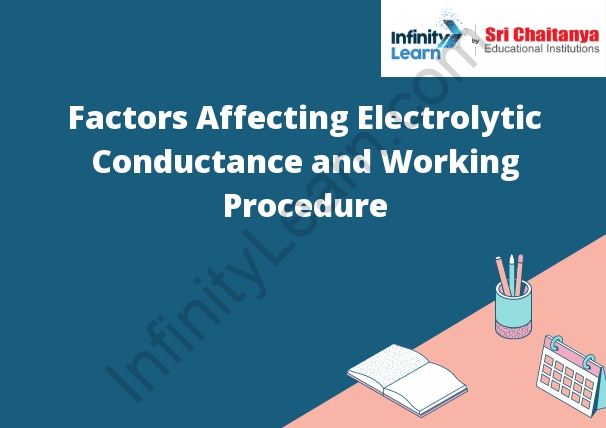Table of Contents
Factors Affecting Electrolytic Conductance and Working Procedure
Factors Affecting Electrolytic Conductance and Working Procedure.
The factors affecting electrolytic conductance are the concentration of the electrolyte, the temperature of the electrolyte, the size of the electrodes, and the type of electrolyte.
The concentration of the electrolyte affects the rate of the electrolytic reaction. The higher the concentration of the electrolyte, the faster the reaction will occur.
The temperature of the electrolyte affects the rate of the electrolytic reaction. The higher the temperature of the electrolyte, the faster the reaction will occur.
The size of the electrodes affects the rate of the electrolytic reaction. The smaller the size of the electrodes, the faster the reaction will occur.
The type of electrolyte affects the rate of the electrolytic reaction. The different types of electrolytes will have different reaction rates.

Electrolysis
Electrolysis is a process that uses electricity to break down a compound into its component parts. In electrolysis, a current is passed through a liquid or solution containing the compound to be broken down. This causes the compound to break down into its component parts, which are then separated by a filter.
What are Electrolytes?
Electrolytes are organic compounds that dissociate in water to form ions. These ions can conduct electricity in solution, and are therefore known as electrolytes. The most common electrolytes are salts, such as sodium chloride (table salt).
Factors affecting Electrolytic Conductance
The following are the factors affecting electrolytic conductance:
1. The nature of the electrolyte: The nature of the electrolyte affects the electrolytic conductance. For example, a strong electrolyte will have a higher electrolytic conductance than a weak electrolyte.
2. The concentration of the electrolyte: The concentration of the electrolyte also affects the electrolytic conductance. A higher concentration of electrolyte will result in a higher electrolytic conductance.
3. The temperature of the electrolyte: The temperature of the electrolyte also affects the electrolytic conductance. A higher temperature will result in a higher electrolytic conductance.
4. The size of the electrolyte: The size of the electrolyte also affects the electrolytic conductance. A smaller size will result in a higher electrolytic conductance.
Working Procedure of Electrolytic Conductance
The electrolytic conductance of an electrolyte is a measure of the ease with which an electric current flows through the electrolyte. The electrolytic conductance is proportional to the concentration of the electrolyte and the cross-sectional area of the conductor.
The electrolytic conductance of a conductor can be measured using a Wheatstone bridge circuit. The bridge is balanced when the potential difference between the two arms of the bridge is equal. The current flowing through the bridge is then proportional to the electrolytic conductance of the conductor.






